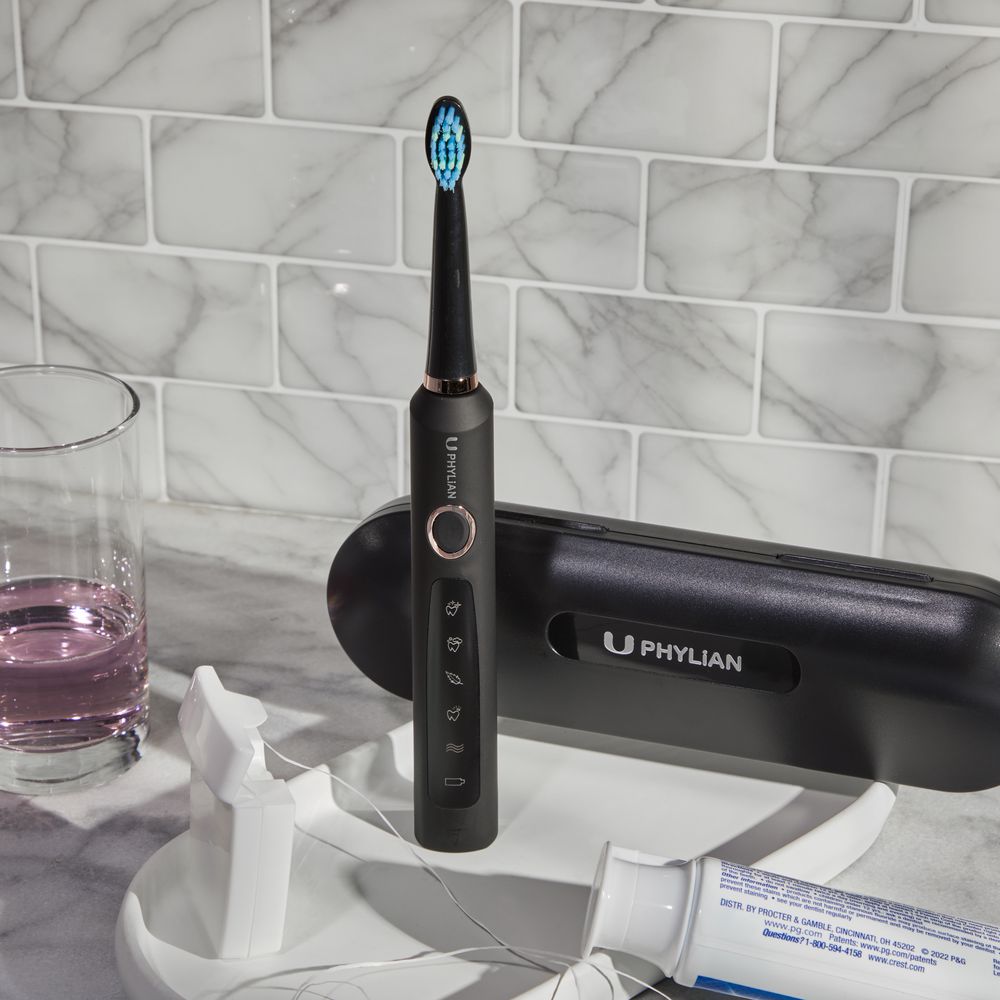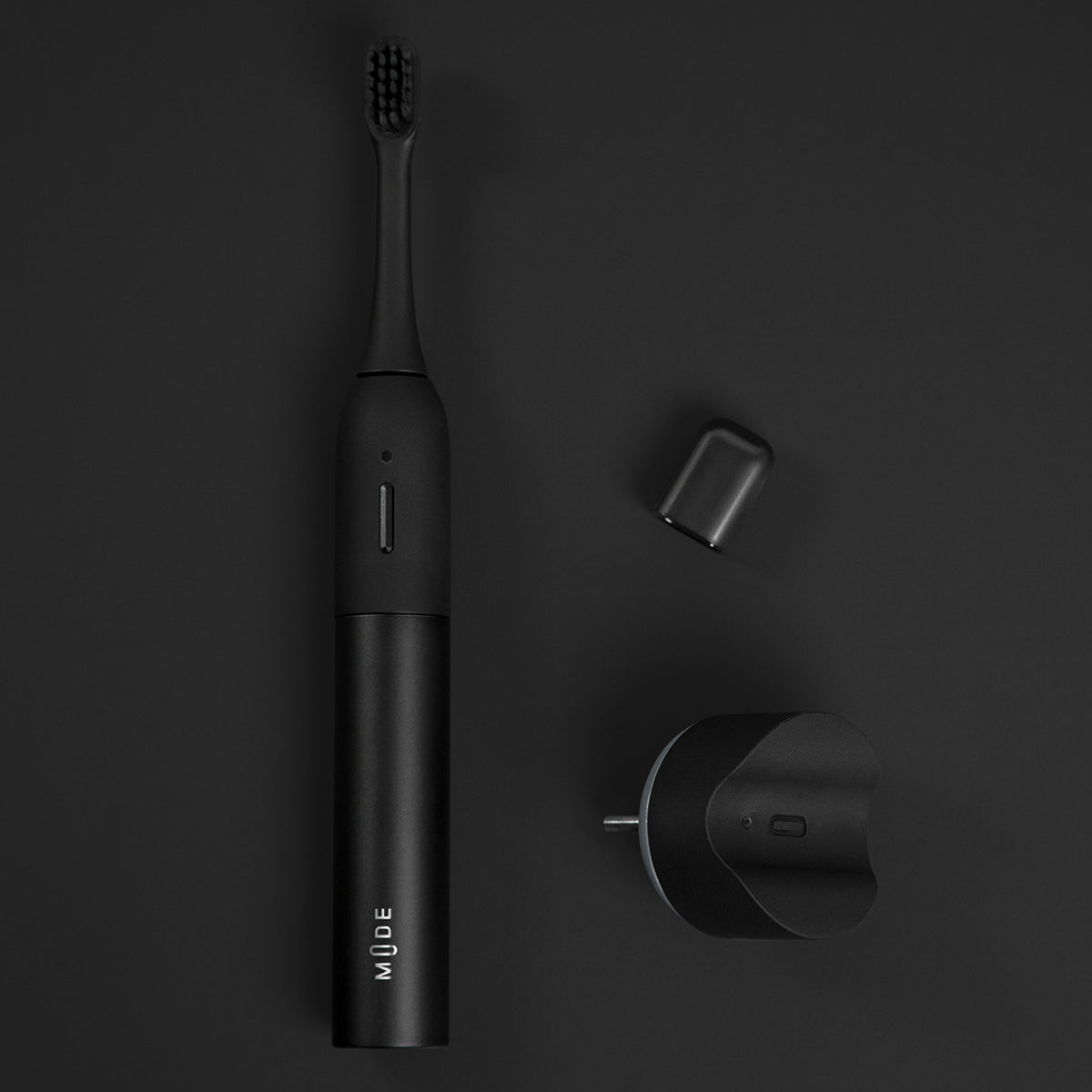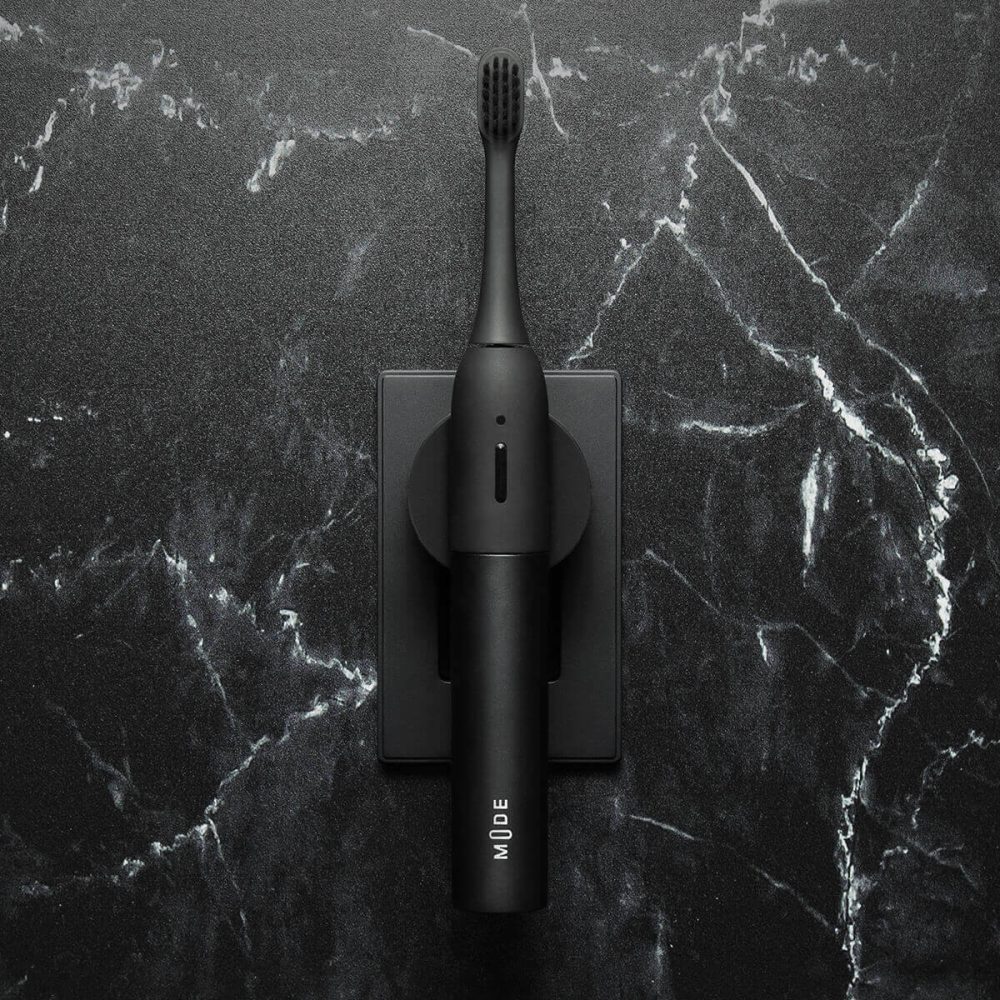The Rise of the Electric Toothbrush
The electric toothbrush has revolutionized oral care.

A Brief History of the Electric Toothbrush
The journey began in 1954 with the invention of the first electric toothbrush, the Broxodent, by Dr. Philippe Guy Woog. Initially, our choices in toothbrushes were limited, but the Broxodent set the stage for future innovation. By the 1959 introduction to the ADA, it was clear that oral hygiene was on the cusp of a major shift.
Advances in Electric Toothbrush Technology
Since the pioneering Broxodent, electric toothbrush technology has advanced significantly. Models now feature rechargeable batteries, eliminating the need for a constant power source. Compact designs fit comfortably in hand, while diverse brush head sizes cater to various oral health needs. High velocity and rotating bristles enhance cleaning efficiency over manual brushes. With additional features like Waterpiks and connectivity to smartphone apps, modern electric toothbrushes offer unprecedented capability for oral health management.
Why Electric Toothbrushes Surpass Manual Ones
The superiority of electric toothbrushes over manual ones is evident in their enhanced efficiency and health benefits.
Enhanced Cleaning Efficiency
Electric toothbrushes demonstrate a remarkable ability to clean teeth more thoroughly than manual toothbrushes. Their advanced technology enables multiple brushing modes tailored for different cleaning needs. An electric toothbrush can perform thousands of strokes per minute. This is far beyond the capability of a manual brush, which averages about 300 strokes per minute. Consequently, they can remove more plaque and reduce the chance of cavities. Their structured bristle movements cover a broader area, ensuring that every part of your mouth receives adequate attention during a brushing session.
Health Benefits Beyond Oral Hygiene
In addition to superior cleaning efficiency, electric toothbrushes offer extensive health benefits. Regular use of an electric toothbrush can greatly reduce the prevalence of periodontal disease, thus lowering the risk for associated health issues like heart disease and stroke. Furthermore, the precision of an electric toothbrush in cleaning hard-to-reach areas helps prevent the buildup of harmful bacteria that can lead to severe oral health complications. Many electric models also come with pressure sensors which prevent excessive force that can harm gums, providing a safer brushing experience that promotes overall gum health.
Comparing Types of Electric Toothbrushes
Electric toothbrushes boast a variety of features that distinguish them from manual ones. Let us delve into the key types that are popular today.
Understanding Sonic Toothbrushes
Sonic toothbrushes are a subset of electric toothbrushes known for their efficacy in plaque removal. Unlike traditional electric models, sonic toothbrushes use high-frequency vibrations. These vibrations allow them to perform significantly more brush strokes per minute. This feature aids in breaking down plaque easily and more efficiently, ensuring a deeper clean. Many sonic toothbrushes can perform up to tens of thousands of strokes per minute. This makes them exceptionally good at combating plaque and maintaining gum health.
The Versatility of Electric Toothbrush Models
Electric toothbrushes come in various forms, each offering unique advantages. Some models boast advanced functionalities such as built-in timers and pressure sensors. These features help users brush their teeth more effectively and safely by signaling when to stop applying too much pressure or when to move to another part of the mouth. Other models offer connectivity to smartphone apps. This allows users to track their brushing habits, get personalized feedback, and even improve their overall dental care routine. With such versatility, electric toothbrushes cater to a wide range of oral health needs and preferences.
Features That Make Electric Toothbrushes Stand Out
Electric toothbrushes offer features that manual ones can’t match. These innovations enhance not only the user experience but also the efficacy of daily oral care.
Rechargeable Batteries and Connectivity
Today’s electric toothbrushes come equipped with rechargeable batteries. This means no cords during use. You can brush anywhere, anytime without seeking an outlet. Many models also connect to smartphone apps. This connectivity offers insights into your brushing habits. It guides you to brush more effectively and can track progress over time.
Pressure Sensors and Brushing Modes
Pressure sensors in electric toothbrushes prevent gum damage. They alert you when pressing too hard. Various brushing modes cater to different needs. These include daily cleaning, gum care, and sensitive teeth options. Switching modes is simple, ensuring every user finds their best brush setting.
 Considerations When Switching to an Electric Toothbrush
Considerations When Switching to an Electric Toothbrush
Choosing the right electric toothbrush can be a game-changer for your oral health. It’s crucial to consider your specific needs when making the switch. Here are some key considerations to keep in mind.
Recommendations for Specific Oral Health Needs
Every mouth is unique, and so are the oral health requirements. For individuals with sensitive teeth, a toothbrush with a sensitive mode is ideal. This mode reduces the intensity and protects the enamel.
People with a history of periodontal disease might benefit from an electric toothbrush with specialized gum care settings. These help to gently clean along the gum line and prevent further damage.
For those wearing braces, an electric toothbrush with an ortho brush head is recommended. It’s designed to clean around wires and brackets effectively, promoting better oral hygiene.
Children often find electric toothbrushes more fun to use, and they can encourage good brushing habits. Choose a model with a built-in timer to ensure they brush for the recommended two minutes.
Importance of Brush Head Selection
The brush head plays a vital role in the effectiveness of your electric toothbrush. A wrong choice could mean less efficient cleaning or even discomfort during brushing.
For general cleaning, a standard brush head usually does the trick. It’s typically round and oscillates to remove plaque effectively.
For deeper cleaning between teeth, a slim brush head with tapered bristles can reach those tight spaces.
Individuals with braces or dental work might opt for an ortho brush head. Its shape and bristle pattern are tailored for cleaning around dental appliances.
Lastly, if you have gum issues or sensitive teeth, look for brush heads with softer bristles. They provide a gentle but effective clean.
In conclusion, when switching to an electric toothbrush, it’s important to consider your particular oral health needs and choose a brush head that meets those requirements.
The Impact of Electric Toothbrushes on Oral Health
The effectiveness of electric toothbrushes goes beyond mere convenience. They have a significant impact on maintaining oral health.
The Fight Against Plaque and Gum Disease
Electric toothbrushes are powerful allies in the battle against plaque. Through high-speed vibrations and rotating bristles, they remove plaque more efficiently than manual brushes. This ensures cleaner teeth and healthier gums. The prevention of gum disease is a key benefit, as consistent use can reduce inflammation and bleeding gums, which are early signs of gum issues.
Regular use of an electric toothbrush can also help fight periodontal disease. This is a serious gum infection that can damage the soft tissue and destroy the bone supporting teeth. By effectively removing plaque, electric toothbrushes play a critical role in preventing this condition.
Moreover, many electric toothbrushes now feature modes specifically for gum care. These modes are gentler on the gums, promoting circulation and health without harsh brushing.
The Benefits for Individuals with Braces
People with braces face unique challenges in oral hygiene. Food particles and plaque can easily accumulate around brackets and wires, leading to increased risk of tooth decay and gum disease.
Electric toothbrushes offer a solution for those wearing braces. They are designed to clean more thoroughly around orthodontic appliances. Special ortho brush heads can reach into the crevices and around the hardware of braces. They dislodge food and plaque, making it easier to maintain oral health during orthodontic treatment.
Furthermore, the timer feature found in many electric toothbrushes ensures that individuals with braces brush for the full two minutes recommended by dentists. This discipline can be crucial for preventing the complications associated with improper brushing while undergoing orthodontic care.
In summary, electric toothbrushes provide a significant advantage. They promote better oral health for everyone, especially those battling plaque, gum disease, or navigating the complexities of braces.
 Electrifying Your Routine: Practical Advantages
Electrifying Your Routine: Practical Advantages
Embracing an electric toothbrush can revolutionize your daily oral care routine. With smart design and innovative features, electric brushes bring several practical benefits that go beyond mere brushing.
Convenience and Time-Saving Aspects
Switching to an electric toothbrush simplifies your oral care. Its advanced technology allows for a quicker, more thorough clean. In just two minutes, an electric brush can perform more strokes than a manual brush can in a much longer session. This efficiency saves you time each day. The convenience is further enhanced by features like built-in timers. These ensure you’re brushing for the full recommended period. Rechargeable batteries mean no hunting for disposable ones. You can just charge and go. For those with busy lifestyles or young children, this ease of use is a game changer.
Environmental Considerations of Modern Electric Toothbrushes
Today’s electric toothbrushes also address environmental concerns. Many models now include options made from biodegradable materials. They help reduce plastic waste. Rechargeable batteries cut down on the disposal of single-use batteries, making a positive impact. Moreover, the long lifespan of electric toothbrushes, with only the brush head needing periodic replacement, creates less waste compared to frequently discarded manual brushes. By choosing an electric toothbrush, you’re not just improving your oral health. You’re also making a more eco-friendly choice for the planet.